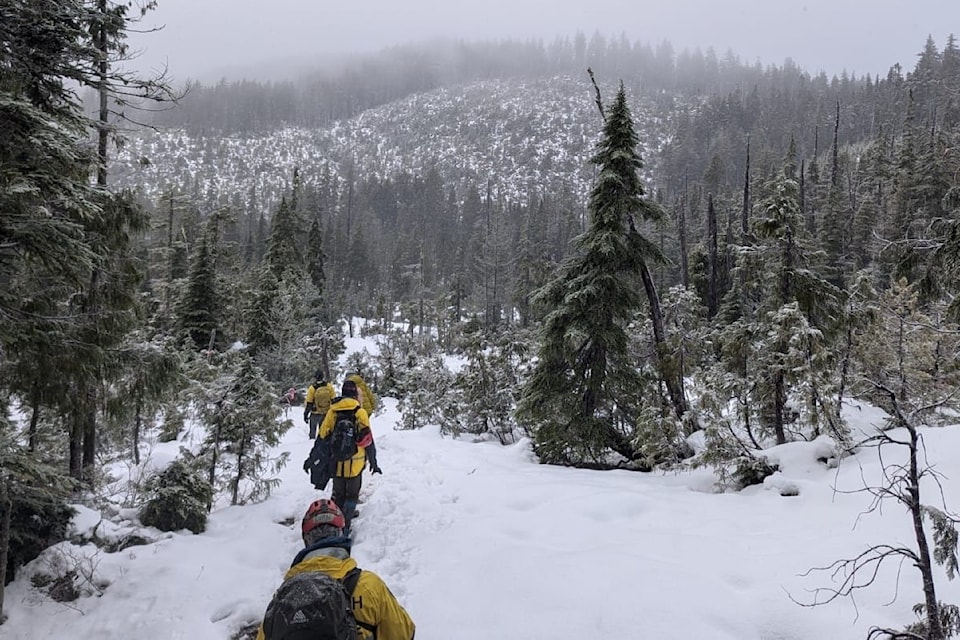Winter conditions are likely to blame for members of a group of 15 hikers making a second unexpected overnight on the Kludahk Trail northeast of Jordan River.
For some, a second night was spent with some well-trained rescue volunteers, while others hiked out
Juan de Fuca Search and Rescue was called in before noon on Sunday (Nov. 14) for the group that included four adults and 11 kids roughly aged 11 to 15, said Victoria Clarke, coordinator for JdF SAR and a search manager.
“I suspect they underestimated the winter conditions up there,” she told the Sooke News Mirror.
“Those are challenging weather conditions on the Kludahk Trail, even the most prepared people once you get wet, once you get cold, your body expends a lot of energy trying to stay warm and we worry about hypothermia.
“What it’s like in Jordan River is not what it’s like in the Kludahk Trail.”
The group had hiked up, overnighting at Meadow Cabin Saturday then on to Wye Lake before calling for help after determining hiking out Sunday wasn’t possible as a group. An InReach – A Garmin satellite communicator – provided them quick and key access to the resources.
“Thanks to West Coast helicopters we were able to insert two people to get there quickly. That enabled us to make an assessment of what was going on,” said Clarke, one of the two SAR volunteers who made the first in-person contact.
With the 442 Squadron military search and rescue helicopter team on call from Comox, the initial plan was to helicopter all 15 people out of the wilderness.
Low clouds and the setting sun scuttled that plan. After an assessment, two adults and six young people from the group hiked out with Juan de Fuca and Metchosin SAR members while others remained overnight.
“Once we made that decision and I had more team members come in to assist, they came in by foot and we got a big fire going,” said Clarke, who hiked out that night to get warm and dry herself before taking over command at Jordan River the next day.
Those left behind were warm and dry, with bellies full of hot food and drink, to shelter in place overnight.
“It’s the kind of thing we don’t normally have to do, but we train for that, so it all came together,” Clarke said. “They were great, they were all able to hike out. We had lots of people to assist with their gear and equipment.”
The group was prepared, doing nearly everything right including calling for help early before waiting until things were more dire, forcing the rescue team to make assessments and decisions in the dark.
“They had good gear, they called for help when they realized they were in trouble. I credit them for having communication devices,” Clarke said. “I commend them for calling early, for recognizing when they needed help.”
As is also often the case, the rescue was a team sport. For this rescue that included Metchosin Search and Rescue, West Coast Helicopters and 442 Squadron (the Canadian Forces transport and rescue squadron based in Comox).
“Sometimes it takes various components in a rescue, everyone coming together and working hand-in-hand,” Clarke said. “We don’t do this on our own. We do it with the support and assistance of other teams.”



